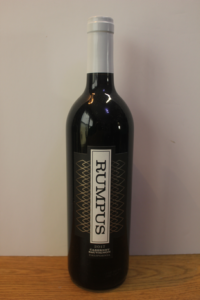

The appellation is tiny, only 785 hectares, but within this flat but bijou acreage there are a great number of small estates with few of the grand châteaux that crop up throughout other Bordeaux districts. It's worth buying the best which are never cheap. However, at its best Pomerol produces sublime wines with a rich, almost fleshy, velvety flavour. No white wines are made.ĭespite not having a classification system like the Médoc and Saint-Emilion, Pomerol has an enviable reputation for some of the very best Bordeaux wines that can fetch eye-watering prices. Above this is Première Grand Cru, with 18 member currently, and at the top the Premières Grands Crus (A) which consists of the Châteaux Cheval Blanc, Ausone, Angelus and Pavie, the latter two having been promoted in 2012.Īt its best Saint-Emilion should be should be rich, full-coloured, spicy and apparently sweet, and the best properties balance these qualities with finesse length. The levels of the classification begin with the Grand Cru Classé properties of which there are several hundred (there are 800 or so estates in Saint-Emilion in total). Once accepted at one of the three levels the wines are required to adhere to stricter appellation rules than their supposedly lesser fellow estates with regard to yields and ageing. Wines are assessed on several criteria such as soils, aspect and vine age and are tasted for typicity. Established in 1955, the Saint-Emilion classification is redrawn every ten years, which always causes a legal rumpus as demoted properties seek redress for the insult. Unlike its Pomerol next door, the wines of Saint-Emilion have access to a classification system akin to that of the 1855 Médoc version. Though the best wines of the second group are less highly regarded than the best of the first group there are superb wines in both. The second group of properties are to be found on an escarpment east of the town of Saint-Emilion, where a thin layer of topsoil overlays a bedrock of sandstone on south-facing slopes that end suddenly and precipitously. A continuation of the plateau of sand and gravel that defines the best wines of Pomerol, this area is home to the most sought after of all Saint-Emilions, Château Cheval Blanc. The first is up on the plateau that abuts the border with Pomerol. If we ignore the areas down by the river and on its flood plain and the satellites that we discuss elsewhere, there remain two main areas where the quality of the wines speaks for the terroir.

If we ignore the areas down by the river and on its flood plain and the satellites that we discuss elsewhere, there remain two main areas where the quality of the wines speaks for the. Much is made of the clay based soils of the area but the picture is a broader than that.

The soils, damper and cooler than those of the Médoc, are responsible for this and merlot performs beautifully in the clay, limestone, gravel and other alluvial deposits that make up the vineyard soils. Merlot is the dominant grape here with cabernet franc in earnest support and some supporters of the more difficult to ripen cabernet sauvignon. The vineyards and much visited town have been awarded UNESCO world heritage List status as a cultural landscape and are enjoying a period of particular dynamism and prosperity. There is an ancient history of wine making in the area of St Emilion, with Roman viticulture attested to in the poetry of Ausonius after whom the Première Grand Cru Château Ausone is named.


 0 kommentar(er)
0 kommentar(er)
